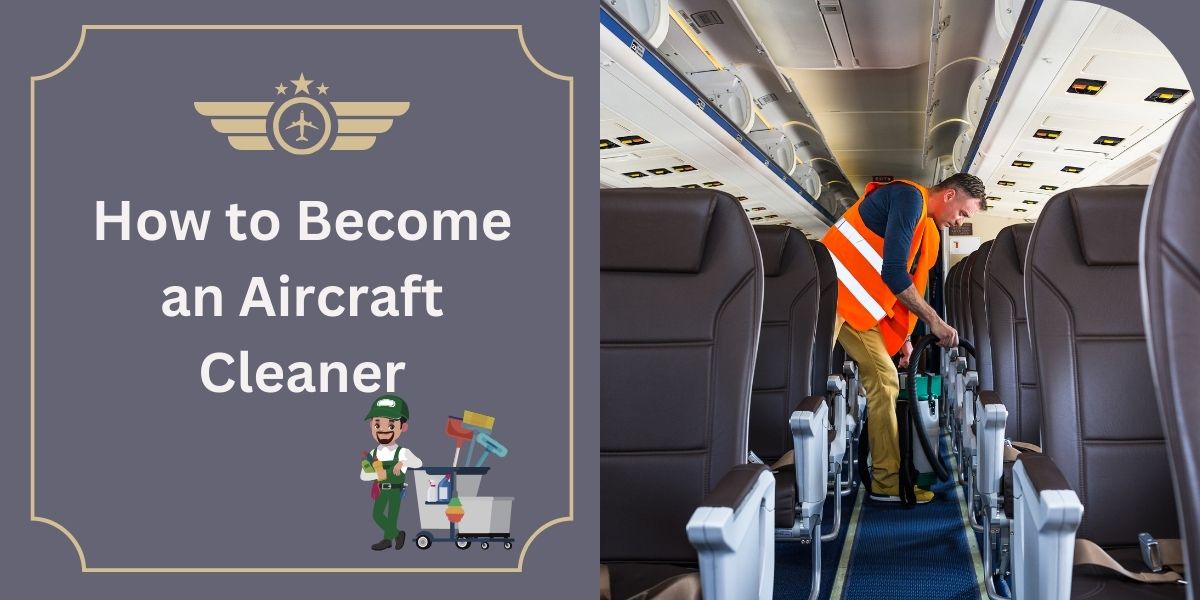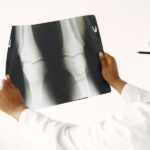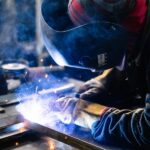Aircraft cleaning refers to the comprehensive process of cleaning and sanitizing the interior and exterior of an aircraft by an aircraft cleaner. It involves using professional cleaning techniques and special products to effectively remove dirt, grime, and contaminants from various surfaces within the aircraft cabin.
The primary objective of aircraft cleaning extends beyond merely preserving the aircraft’s visual aesthetics. It focuses on keeping the interior clean to prevent the spread of viruses, germs, and diseases among passengers and crew.
To achieve these goals, the task of aircraft cleaning is entrusted to trained specialists who possess an extensive understanding of the unique challenges associated with cleaning aircraft interiors. In this article, we will discuss how to become an aircraft cleaner, your responsibilities, requirements, and salary.
Why clean aircraft?
The cleanliness of an aircraft holds significant value, contributing to passengers’ overall satisfaction and enhancing their travel experience.
A well-maintained and pristine aircraft not only brings a sense of joy to passengers but also ensures their comfort and creates a cozy ambiance and a healthy environment throughout the journey.
Notably, passenger reviews consistently highlight the important effect of a clean aircraft on their happiness and satisfaction.
They often give a top rating of five stars to the airline or specific journey because of the cleanliness, even above other services provided.
What does an aircraft cleaner do?
An aircraft cleaner cleans and restocks the interior areas of a commercial aircraft. In this career, your responsibilities include cleaning all areas of the passenger cabin, lavatories, galleys, and overhead compartments.
You remove trash, clean floors and seats, and ensure that passengers do not leave luggage or other items behind in the aircraft. You may assist baggage handlers, aircraft crew, or catering staff as you clean, clear, and stock the cabin according to expectations.
How to Become an Aircraft Cleaner
Hiring managers expect aircraft cleaners to have soft skills such as customer service skills, hand-eye coordination, and physical strength.
It takes an average of 1-3 months of job training to become an aircraft cleaner. Getting an aircraft cleaner certification like the Certified Aviation Manager (CAM) will help you earn more.
To become an aircraft cleaner, here are six steps you can follow:
1. Education Requirements
You must consider how much education you need. Based on real aircraft cleaner resumes, 8.1% of aircraft cleaners have a bachelor’s degree. Regarding higher education levels, 1.8% of aircraft cleaners have master’s degrees. Even though some aircraft cleaners have a college degree, one can become one with only a high school degree or GED.
2. Develop Specific Skills
You need some essential skills before entering the job market. The following skills are frequently mentioned in aircraft cleaner job descriptions:
- Attention to detail and a strong commitment to cleanliness and hygiene.
- Ability to work efficiently and meet tight schedules, especially during aircraft turnaround times.
- Physical stamina and the ability to lift and move heavy cleaning equipment.
- Strong communication skills and the ability to work as part of a team.
- Flexibility to work variable hours, including nights, weekends, and holidays.
3. Complete Relevant Aircraft Cleaner Training And Internships
Accountants spend an average of 1-3 months on post-employment, on-the-job training. During this time, new aircraft cleaners learn the skills and techniques required for their job and employer.
4. Research Aircraft Cleaners Duties And Responsibilities
Aircraft cleaner’s duties and responsibilities are what they do on a typical day. Here is a list of the main duties and responsibilities that appear on their job listings:
- Clean the cockpit, restrooms, tray tables, change pillowcases, and fold blankets.
- Clean all seats, seat back pockets, and tray tables, and replace soil magazines.
- Assist TSA with cabin inspections and security searches.
- Clean stoves after kitchens are closed and prepare for the next shift
- Assist in receiving and loading passenger luggage through the TSA checkpoint.
- Sanitize high-traffic areas such as restrooms, seats, doors, overhead compartments, and windows.
5. Prepare Your Resume
When your background is strong enough, you can start writing your aircraft cleaner resume.
6. Apply For Jobs
Now it’s time to start searching for jobs. Consider the tips below for a successful job search:
- Browse job boards for relevant postings
- Consult your professional network
- Reach out to companies you’re interested in working for directly
Duties and Responsibilities of an Aircraft Cleaner
The major responsibilities of aircraft cleaners include the following:
- Interior Cleaning: Perform thorough cleaning of aircraft interiors, including seats, carpets, overhead bins, tray tables, and windows, to ensure a clean and inviting environment for passengers.
- Sanitization: Use approved cleaning agents to sanitize high-touch surfaces such as armrests, lavatories, and door handles in compliance with industry standards and guidelines.
- Trash Removal: Collect and dispose of waste and trash from the aircraft, including used items left behind by passengers.
- Restocking: Ensure that necessary supplies, such as blankets, pillows, and magazines, are restocked and organized for the next flight.
- Safety Compliance: Follow safety procedures and guidelines while working on and around aircraft to prevent accidents and injuries.
- Equipment Maintenance: Maintain and clean cleaning equipment and supplies, such as vacuum cleaners, mops, and cleaning solutions, to ensure they are in good working condition.
- Reporting: Report any damage, malfunction, or issues with the aircraft’s interior to the maintenance team for prompt resolution.
- Team Collaboration: Collaborate with other cleaning crew members to efficiently clean and prepare aircraft for departure.
- Quality Assurance: Conduct quality checks to ensure that aircraft are cleaned to the highest standards, making any necessary adjustments or improvements.
- Adherence to Regulations: Stay updated on industry regulations and guidelines related to aircraft cleanliness and sanitation and ensure compliance at all times.
What are the requirements to become an aircraft cleaner?
Here is a list of some of the requirements and qualifications for aspiring aircraft cleaners.
- High school diploma or equivalent.
- Previous experience in aircraft cleaning, janitorial work, or a related field is a plus.
- Knowledge of cleaning techniques, products, and equipment.
- Attention to detail and a strong commitment to cleanliness and hygiene.
- Ability to work efficiently and meet tight schedules, especially during aircraft turnaround times.
- Physical stamina and the ability to lift and move heavy cleaning equipment.
- Strong communication skills and the ability to work as part of a team.
- Flexibility to work variable hours, including nights, weekends, and holidays.
- Familiarity with safety protocols and the ability to follow them rigorously.
- Willingness to undergo background checks and security screenings required for working in secure airport areas.
What is the salary of an aircraft cleaner?
As of January 13, 2024, the average hourly pay for an aircraft cleaner in the United States is $15.60 an hour.
While ZipRecruiter is seeing hourly wages as high as $22.12 and as low as $10.58, the majority of Aircraft Cleaners wages currently range between $12.98 (25th percentile) and $17.31 (75th percentile) across the United States.
The average pay range for aircraft cleaners varies greatly (by as much as $4.33), which suggests there may be many opportunities for advancement and increased pay based on skill level, location, and years of experience.
Work Environment for Aircraft Cleaners
Aircraft cleaners typically work in hangars or on the tarmac at airports. They may be exposed to loud noise from aircraft engines, fumes from cleaning chemicals, and inclement weather conditions.
They typically work in teams of two or more and use ladders, scaffolding, and other equipment to reach high areas on the aircraft.
Aircraft cleaners typically work full-time, and their hours may vary depending on the airline’s schedule. They may work early morning, evening, or overnight shifts and may be required to work on weekends and holidays. Some aircraft cleaners are members of unions, which set wages and working conditions.
Conclusion
The aircraft cleaner plays a crucial role in ensuring the cleanliness and sanitation of aircraft interiors, contributing to safety, comfort, and overall customer satisfaction.
You will be responsible for maintaining the highest standards of cleanliness, adhering to safety protocols, and working efficiently to support our airline’s operations.




 Jobi.ng
Jobi.ng




